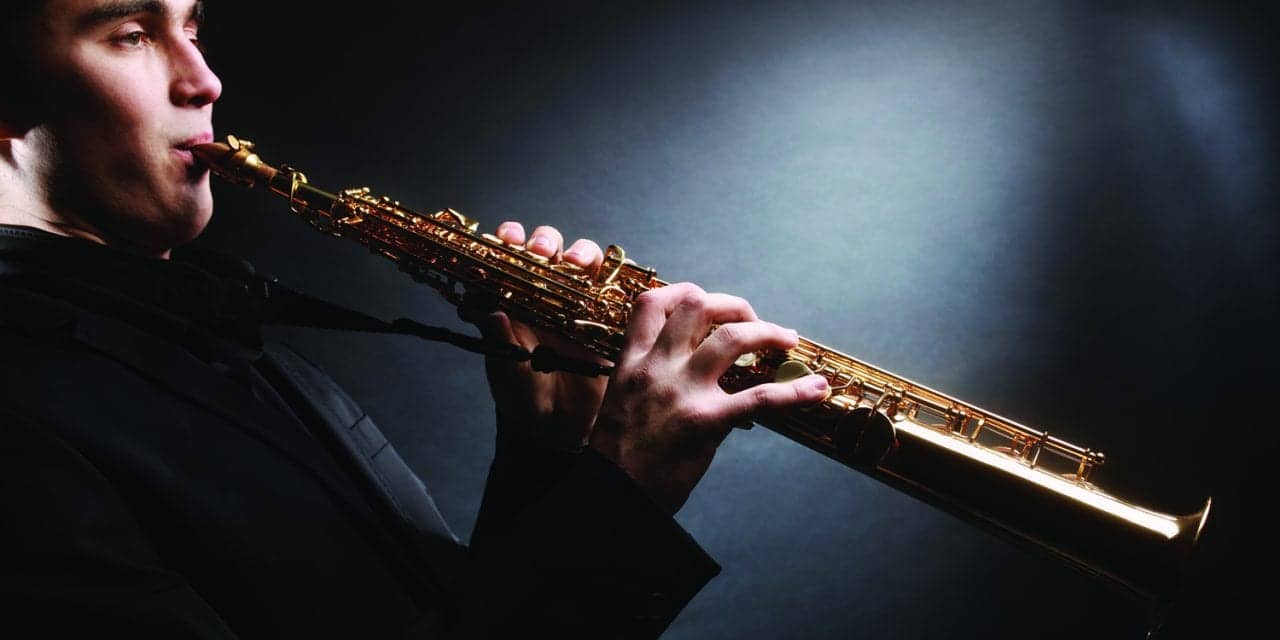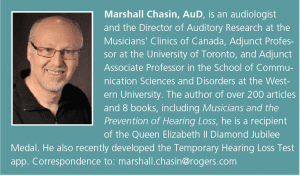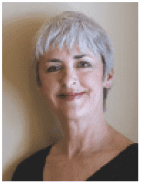Back to Basics | July 2018 Hearing Review
Recently there have been news reports about famous musicians who can no longer perform their music and have chosen to retire. By hook or by crook, that should not happen! There are a multitude of strategies and technologies that can extend anyone’s playing and singing career.
I recently saw two hard-of-hearing clients with high-frequency sensorineural hearing losses who were considering giving up music. One was a young vocal music student at a local college and the other was nearer to the end of his playing career. They were contemplating “retirement” for different reasons.
The music student was studying voice and considered herself to be a soprano. She was having difficulty passing the “ear training” classes at her college, which are a requirement for all music programs. This involves identifying musical intervals, such as thirds or fifths, on the piano keyboard. She had cochlear dead regions down to 1500 Hz, which is surprisingly low for someone who has relatively good hearing acuity up to 1000 Hz.
A quick and simple solution for her turned out to be having the musical intervals played in a lower octave; in her case, being in the octave below middle C. This proved to be much easier, and after some training, this music student was better able to identify the intervals even up to an octave or two above middle C (just above 250 Hz) and obtained a score of 84%. Previously, the best she could obtain for higher octave intervals was in the low 20% region. Much of the “audiology intervention” was to contact the school and explain the situation.
In addition, this student is investigating the possibility with her vocal coach of becoming an alto or alto-soprano, effectively bringing her singing range down a fraction of an octave. This is analogous to a hard-of-hearing violinist deciding to play the slightly larger viola which has more of its sound energy in a lower, hopefully healthier, cochlear region.
The other client is in his 70s and has a gradual high-frequency sensorineural hearing loss, most likely related to his music exposure, as well as the effects of presbycusis. He plays jazz on the saxophone, and like the violin family of instruments, there are a range of saxophones from the soprano to baritone.
Unlike the last client, this musician’s issues are mostly related to his lack of hearing the band leader’s instructions, such as “II, V, I turnaround in G starting at section 12.” Even though jazz is known for its apparent improvisation and rule-breaking of classical music theory, there are well-defined deviations that can still assist the musician. For example, the “II, V, I turnaround” is a jazz standard that students of jazz learn the first day of class. There isn’t a “II, V, VI turnaround,” so some of what the band leader says is highly predictable.
In well-defined band set-ups, the band leader may be in the same location on stage, whereas in other settings, they may be all over the place. For some playing environments, it would be a good idea to place a remote microphone clipped to the band leader’s lapel or even a smartphone which communicates with Bluetooth to the hard-of- hearing musician’s hearing aids, on their music stand.
And, in most cases, the hard-of-hearing musician can simply lean over to his stand partner and ask which section and key they are starting at.
There are a wealth of technical innovations, such as using a personal equalizer on stage with a microphone that communicates with hearing aids, or in-ear monitors hardwired or using wireless transmission. Not everyone has a Richard Einhorn or a Larry Revit in their office to advise on some of the creative technologies, but I would refer anyone who is interested to a 2014 special issue of Hearing Review where Richard and Larry shared what has worked for them.
We now have technologies that are clinically available that were not as readily available in 2014—such as our smartphone’s ability to provide frequency equalization and remote reception via Bluetooth. Hard-of-hearing musicians can, within limits, adjust gain in the lower, mid-, or higher frequency regions quickly on their smartphones. Not only can this be useful to improve monitoring and communication within a band, but it also can be used to improve the quality of amplified music—slight mid-range boosts and high-frequency cuts may make the music sound warmer.
Other than ensuring that the maximum output (OSPL90) is set properly, I would fully support providing musicians with the ability to further being able to adjust elements of their personal amplification. The October 2018 issue of Hearing Review will be an issue that summarizes some of the solutions that many hard-of-hearing musicians have successfully used to continue playing music.
Adapted from: http://hearinghealthmatters.org/hearthemusic/2018/musicians-should-not-retire-hearing-loss/
Original citation for this article: Chasin M. Using audiology to extend a musician’s career Hearing Review. 2018;25(7):10.
Image: © Alenavlad | Dreamstime






